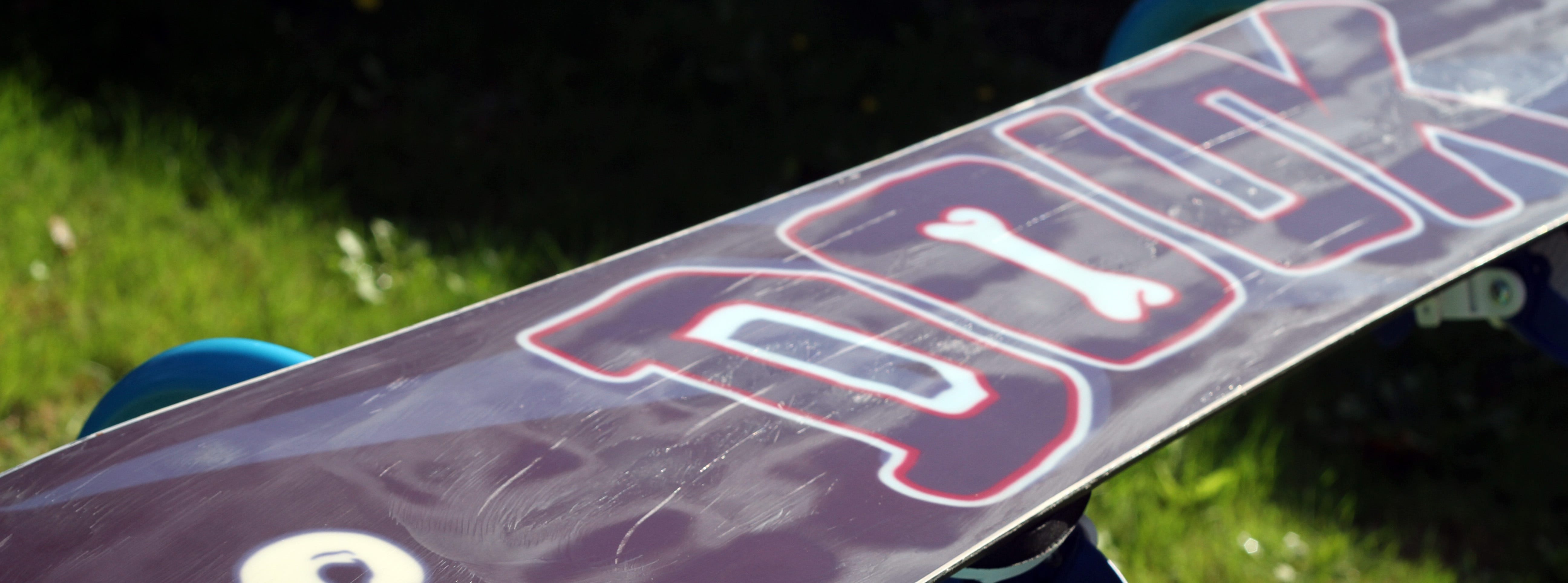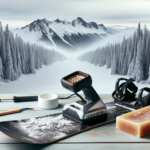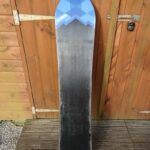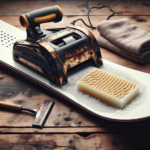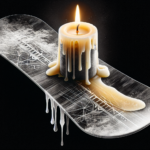Guide on How Often to Wax a Snowboard: Alright, snowboarding enthusiasts, pull up a chair. It’s time to chat about something you’ve probably wondered about: how frequently should you wax your snowboard? Sure, you love gliding effortlessly down the slopes, the wind biting at your cheeks and adrenaline pulsing through your veins. But proper maintenance of your snowboard can make all the difference to your ride quality. This article will offer you the lowdown on the right waxing frequency for your snowboard to keep you shredding the powder all season long.
Understanding the Importance of Waxing Your Snowboard
Snowboarding, just like every other sport, requires the proper maintenance of equipment. One significant aspect of well-managed snowboard gear is a properly waxed snowboard, which affects its overall performance, longevity, and safety significantly.
Assessing the Impact of Waxing on Snowboard Performance
You’ve probably noticed the smooth runs of professional snowboarders, haven’t you? This ease and speed are massively attributed to well-waxed boards. Good wax increases the ability of the snowboard to glide across snow surfaces, reducing friction, and improving the overall speed. If you don’t wax your board properly, it can be challenging to navigate even the gentlest of slopes.
Exploring the Role of Wax in Protecting Snowboard from Damages
Another significant importance of waxing your snowboard is protection. The underside of your snowboard, also known as the base, takes a beating from sharp ice and debris on the piste. Applying wax shields the base, acting as an extra layer of security that prevents scratches or damages that the harsh terrains could cause.
Identifying the Right Time to Wax Your Snowboard
Knowing when to wax your snowboard is vital for maintaining optimal performance. There are several indicators to look out for to help you identify the right time to wax your snowboard.
Observing the Color of Your Snowboard Base
When your snowboard needs waxing, the base generally turns a whitish color. When you see dry, grayish spots, it is usually a hint that your board requires some wax TLC.
Noticing Changes in the Snowboard’s Performance
Have you noticed your snowboard isn’t as swift or easy to control as it used to be? It might be a sign of low wax levels. This slowdown is because there’s increased friction between your board and the snow, hindering its ability to glide smoothly.
Identifying physical indicators: Dull or Dry Spots
Seeing dull or dry spots on your board is one of the most apparent indicators that your snowboard needs waxing. If your board is dry or doesn’t reflect light as it should, you should probably reach for the wax.
Ideal Number of Times a Snowboard Should be Waxed in a Season
Waxing frequency is a subject of debate among snowboarders. However, one guiding principle is that regular waxing is critical for optimal performance.
Importance of Waxing Snowboard Regularly
Regular waxing maintains the base of your snowboard. It not only improves performance but bolsters overall board longevity.
Wax Frequency for a Regular Snowboarder
If you are a regular rider who hits the slopes frequently, the standard advice is to wax your snowboard every 3-5 full day rides. Of course, more frequent waxing doesn’t hurt and will maintain the smooth glides and sharp turns you enjoy on the runs while protecting your board from nick and scratches.
Wax Frequency for Competitive Snowboarding
On the other hand, if you’re a competitive snowboarder, waxing might need to be done much more frequently, ideally after each outing, to maintain peak snowboard performance.
Impacts of Snow Condition on Waxing Frequency
Snowboarding conditions also have a profound effect on how often you should wax your snowboard.
Impact of Snow Temperature on Wax Applicability
Different snow temperatures require different wax types. So depending on the snow temperature, you might need to wax your board more or less frequently.
Effect of Variable Snow Conditions on Waxing Cycle
Changing weather and snow conditions impact the waxing cycle. Hard granular snow wears away wax more quickly than soft powder, meaning you need to wax more often during icy, cold conditions.
The Role of Hard Ice and Man-made Snow in Speedy Wax Wearing
Hard ice and man-made snow have more abrasive surfaces that can strip the wax off your board quicker than natural powdery snow. So if you’re often riding on icy or man-made pistes, consider waxing your board more frequently.
Role of Riding Style in Determining Wax Frequency
Your style of snowboarding also determines how often you should wax your snowboard.
Waxing needs for Aggressive Riders
If you are an aggressive snowboarder who frequently takes corners quickly or does tricks, you likely need to wax more often. Wax provides a smoother ride and makes turning and maneuvering easier, leaving you to concentrate on conquering those snow peaks and valleys.
Waxing needs for Casual or Recreational Riders
Conversely, if you’re a more casual rider who only occasionally takes the board out for a spin, waxing your snowboard after every few rides or when you notice signs of drying should suffice.
Wax Frequency Based on Visibility of Bases
The visibility of the snowboard’s base also affects wax frequency.
Waxing Needs for Clear Based boards
Boards with clear or superlight bases can often expose the snowboard’s core, making it necessary to wax more frequently to protect the board from snow and debris effectively.
Waxing Needs for Opaque Based boards
For boards with opaque bases, waxing frequency depends more on riding conditions and styles, as these bases are typically more durable and resistant to the elements.
Waxing Requirements Based on Age and Use of Snowboard
Waxing needs for New Snowboards
New snowboards often come with a factory wax that wears off quickly. Therefore, you should wax a new board after the first few days of snowboarding.
Waxing needs for Older Snowboards
On the other hand, if you have an older snowboard, it is essential to maintain a regular waxing regimen to keep it in excellent shape.
A Step-by-Step Guide to Waxing Your Snowboard
Preparing the Snowboard for Waxing
To prepare your board for waxing, start by cleaning the base of dirt and old wax. Use a special base cleaner or citrus-based cleaner to help.
Applying the Wax
To apply wax to your snowboard, start by melting the wax using a wax iron. Ensure the iron doesn’t overheat. Drip the wax onto the base of your snowboard, then iron it in evenly.
Scraping off the Excess Wax
After applying the wax, let the board cool. Then proceed to scrape off the excess wax using a plastic scraper, working from tip to tail.
Buffering the Snowboard
Finally, use a structuring brush to buff your snowboard. Brush from tip to tail to give your base a nice structure that promotes smooth gliding.
Understanding the Different Types of Wax
Cold Temperature Wax
Cold-temperature waxes are perfect for frigid conditions as they are harder and last longer on cold, abrasive snow.
Warm Temperature Wax
Warm temperature waxes, on the other hand, are softer and best suited for warmer conditions and wetter snow.
All-Temperature Wax
All-temperature wax is the jack-of-all-trades, well-suited for a range of conditions if you don’t want to keep switching.
Eco-Friendly Waxes
Eco-friendly waxes are increasing in popularity due to their non-toxic, biodegradable nature that’s gentler on the environment.
Tips for Effective Snowboard Waxing
Investing in Quality Wax
The quality of wax you apply significantly affects performance. Invest in a quality wax to ensure your board benefits maximally from your efforts.
Making use of a Wax Iron
A wax iron helps to apply the wax evenly. Using any old iron you have lying around might not distribute the heat evenly and could potentially damage your board.
Optimal Waxing Environment and Storage
Ideally, you should wax your snowboard in a well-ventilated area to avoid inhaling fumes. Also, consider storing your board in a cooler area after waxing, giving it ample time to absorb the wax better.
Snowboarding is a wonderful sport, and maintaining your gear, especially properly waxing your board, greatly accentuates the experience. Knowing when and how to wax your snowboard, understanding the different types of wax, and applying specific tips, can help you get the most out of each adventurous ride down snowy slopes!
- What Snowboard Bindings Should I Get? - January 23, 2024
- What Size Screws For Snowboard Bindings? - January 23, 2024
- How To Snowmobile On Water? - January 23, 2024

